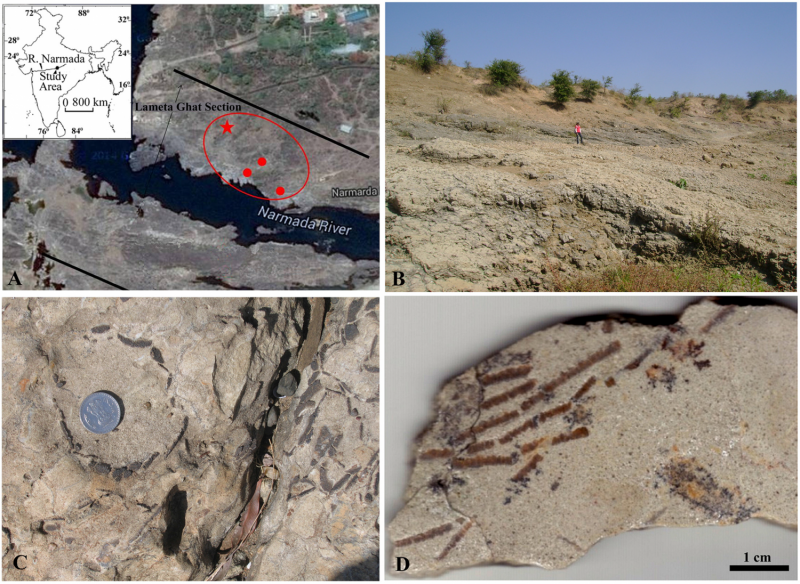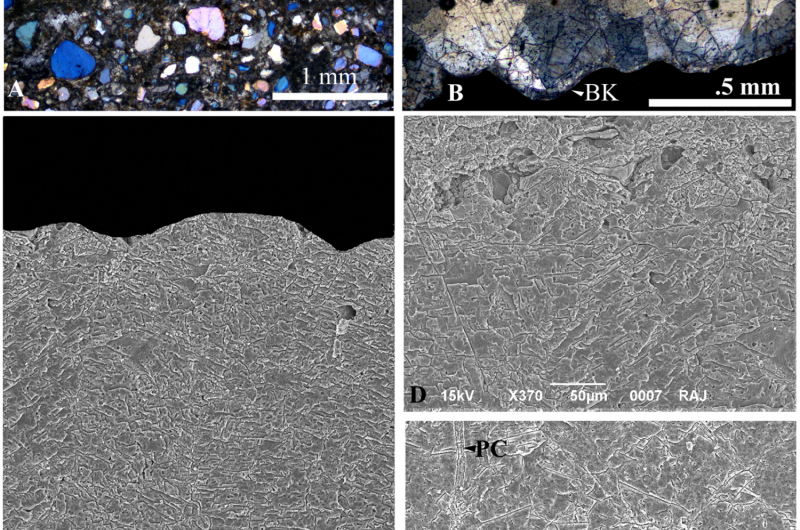Sneaky crocodiles occupied sauropod hatcheries

The nesting grounds of sauropod dinosaurs where absolutely astonishing, covering hundreds of square miles in cases, forming vast playgrounds to rear their young. Some of the most exquisitely preserved sauropod hatcheries are from Jabalpur in India, and offer a unique window into investigating the reproductive and parental behaviour of these magnificent giants.
Recently, researchers have revisited old discoveries, and uncovered a mysterious stranger among the sauropod nesting sites from the Cretaceous Lameta Ghat locality.
At a superficial level, the eggs of reptiles might all appear to be quite similar to each other. However, we can actually gain a lot of insight from detailed examination of their chemistry and ultrastructure, and scientists now know that different groups of reptiles have very different egg types.
In 2013, fossilised eggs were reported from the Lameta Ghat nesting site. The eggshells were originally thought to belong to a large fossilised lizard. However, reanalysis of them shows that they more likely come from a crocodylomorph – the ancestors of modern crocodilians. This is based on several delicate details of the eggshell, including a sub-spherical to ellipsoid shape, a smooth and uneven external surface texture, and distinctly shaped shell units typically found in crocodilian eggs.

The eggshells might have belonged to dyrosaurid crocodyliforms. These are typically regarded as having lived out to sea, but like modern saltwater crocodiles, might have been able to come out onto land for short spells. Dyrosaurids were quite common in South-East Asia towards the closing of the Cretaceous, and even survived the mass extinction that saw the demise of the non-avian dinosaurs. The nesting site is fossilised in rocks that represent an ancient estuarine environment, not too far from the shoreline, so perhaps young dyrosaurids were born on land, taking to the waters only at a later age when they had levelled up their swimming abilities.
Fossilised crocodile nests are remarkably rare in the fossil record, with only around 20 known to date. What this new finding tells us is that sauropod hatchery sites were also used by other large reptiles, including crocodylomorphs, for laying their eggs. How cool is that?

More information: Rahul Srivastava et al. Crocodilian Nest in a Late Cretaceous Sauropod Hatchery from the Type Lameta Ghat Locality, Jabalpur, India, PLOS ONE (2015). DOI: 10.1371/journal.pone.0144369
Journal information: PLoS ONE
Provided by Public Library of Science
This story is republished courtesy of PLOS Blogs: blogs.plos.org.




















